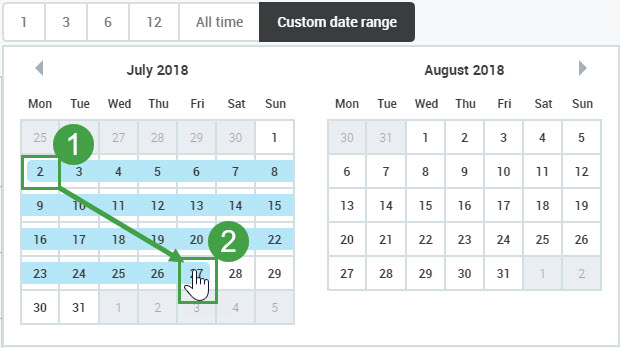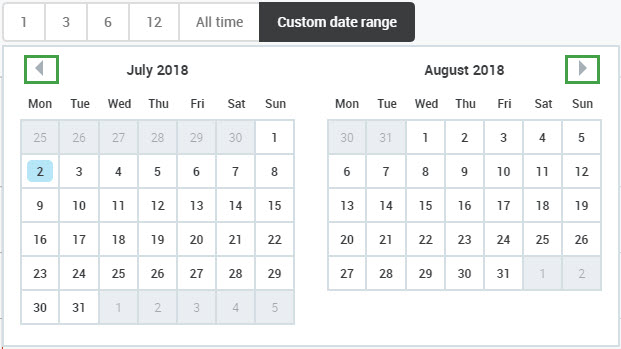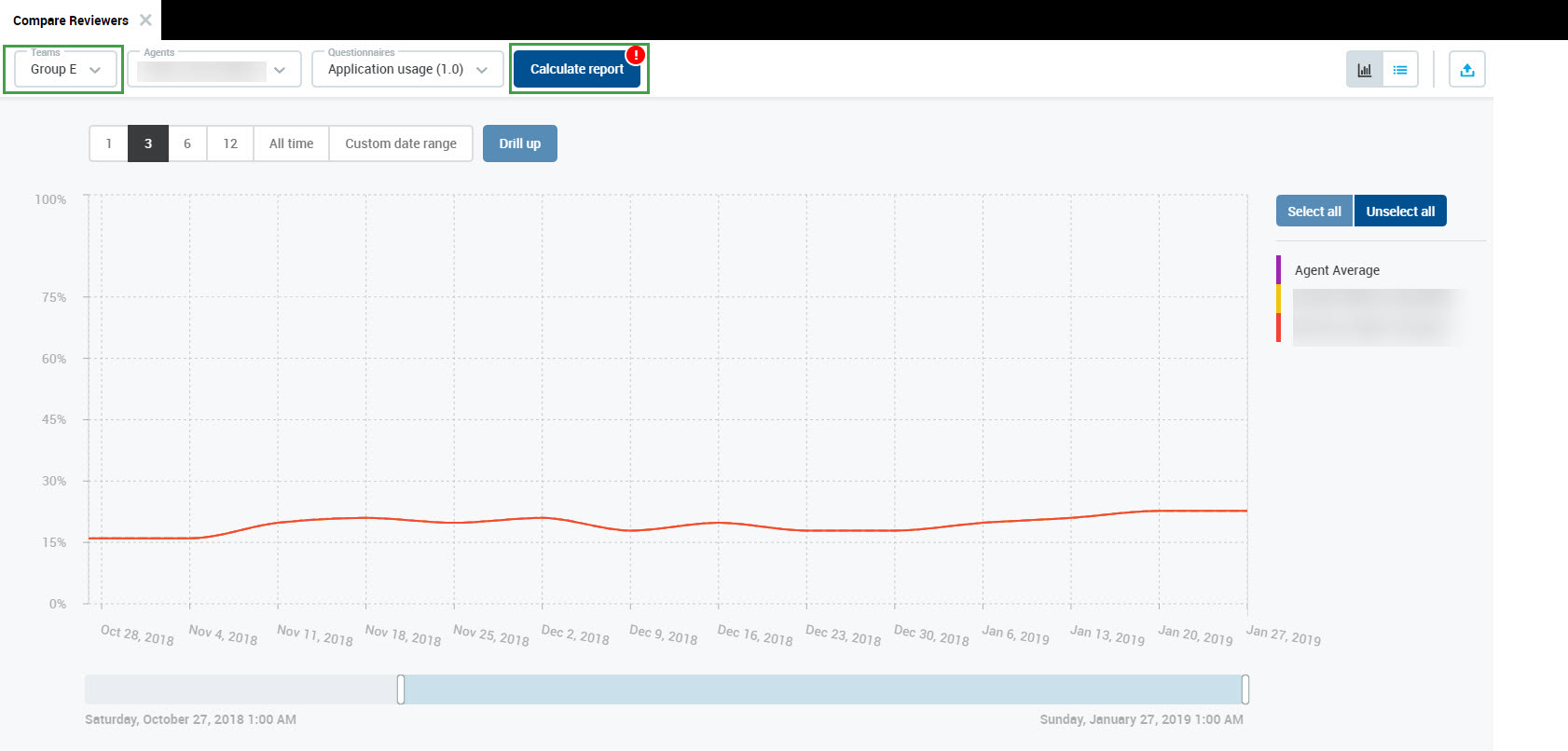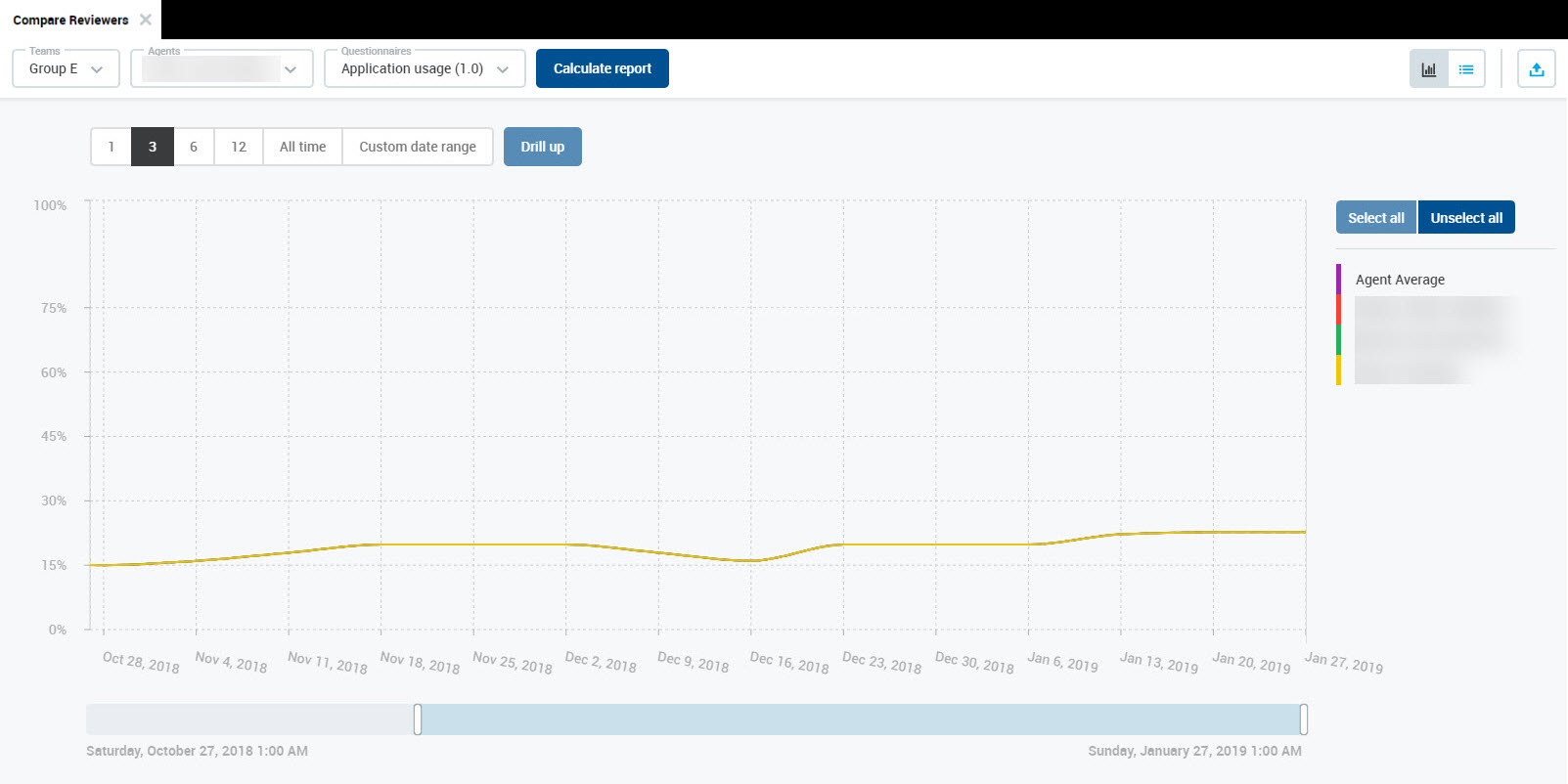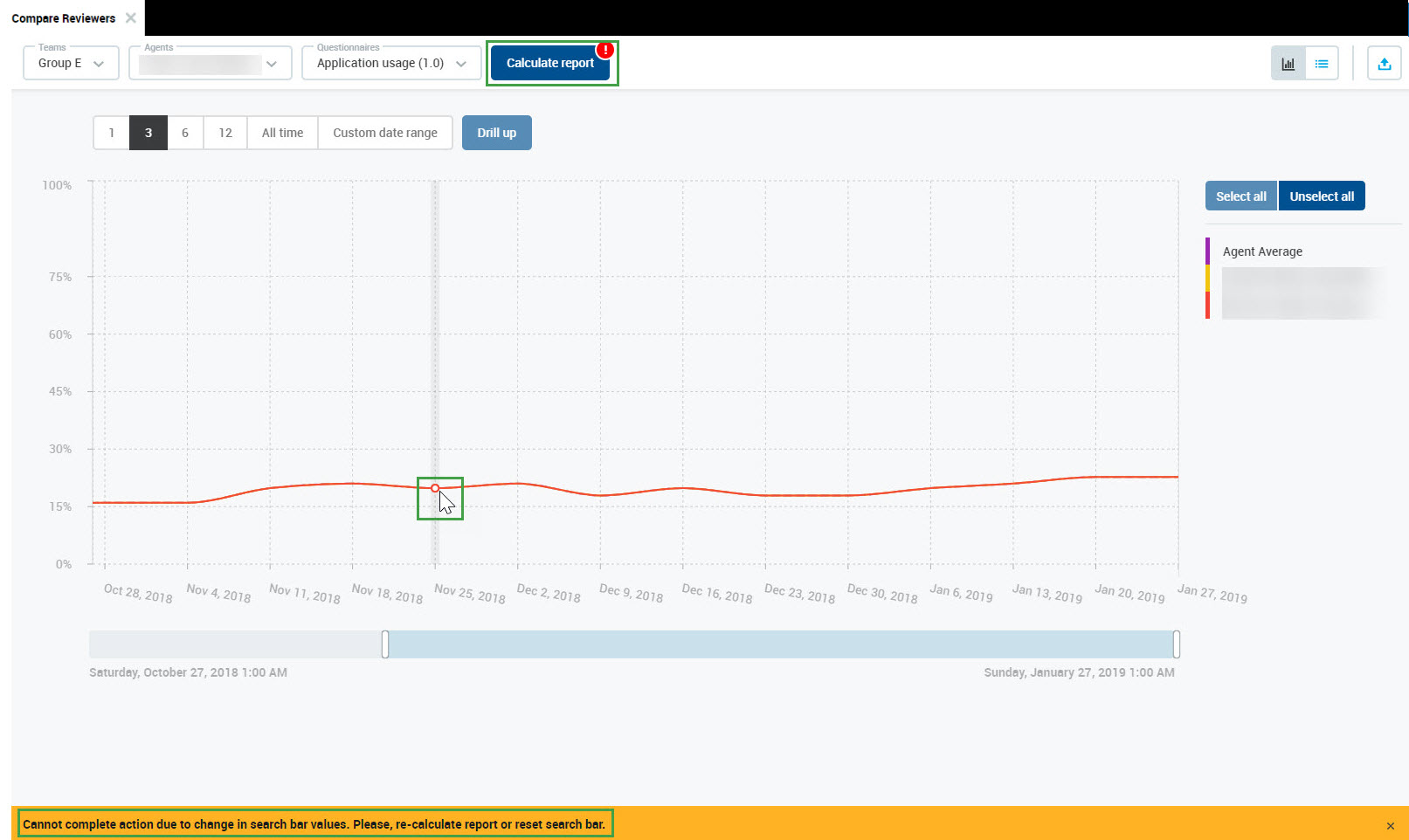Compare Reviewers Report
| CONTENTS |
|---|
The Compare Reviewers report provides an overview of how multiple reviewers scored a single agent. This report is used as a calibration tool and visually depicts how multiple reviewers vary in scoring specific questionnaires so it can be quickly determined if the review team is assessing quality-management scores similarly. The standard deviation is provided to ensure accuracy. It is also possible to drill down to question groups and identify gaps at this level.
Setting Up a Report
To set up the Compare Reviewers report, go to Reports > Compare Reviewers in the menu on the left of the screen. The Compare Reviewers screen will open.
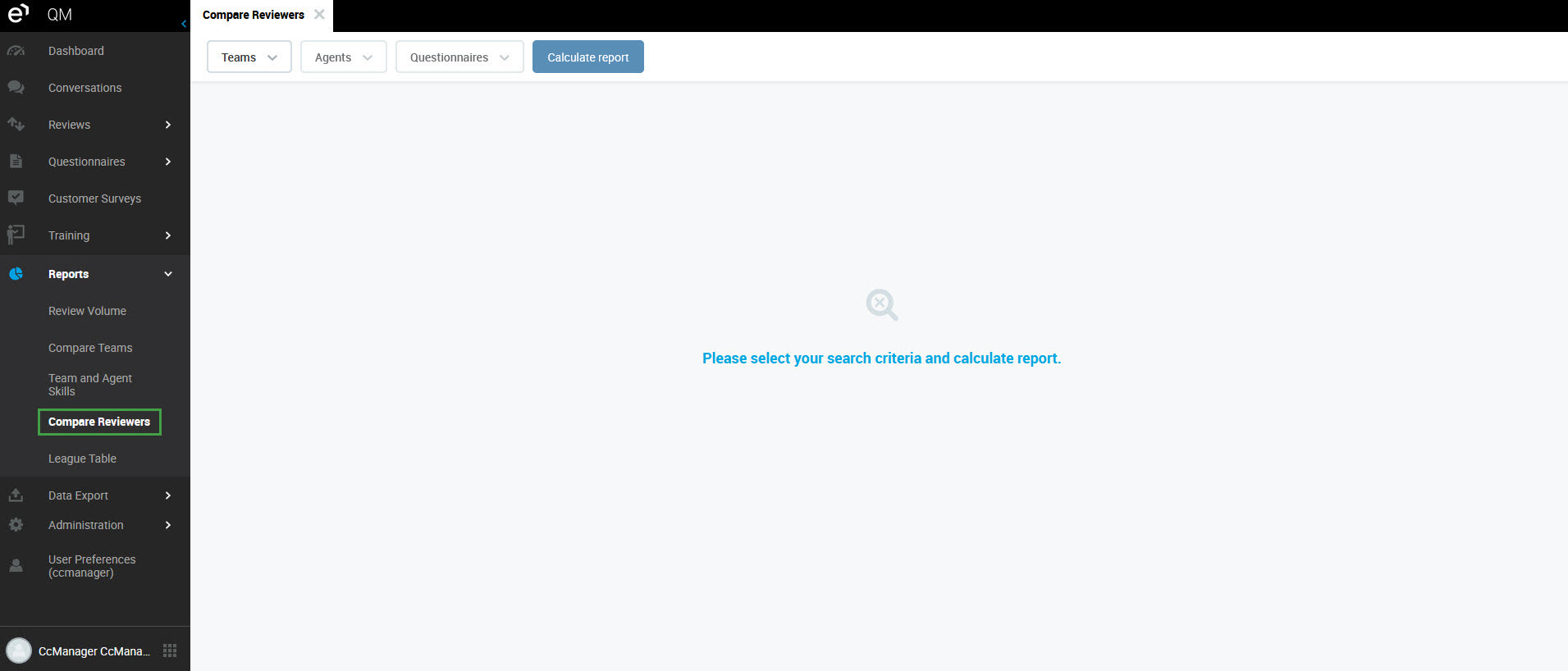
Follow the steps to set up the Compare Reviewers report:
- Select a team from the Teams drop-down menu (mandatory).
Select an agent from the Agents drop-down menu (mandatory).
- Select a questionnaire from the Questionnaires drop-down menu (mandatory).
- Click Calculate report. The Compare Reviewers report will display.

Hover the mouse cursor over the chart to view details. A tooltip with details for the selected point in time will appear.
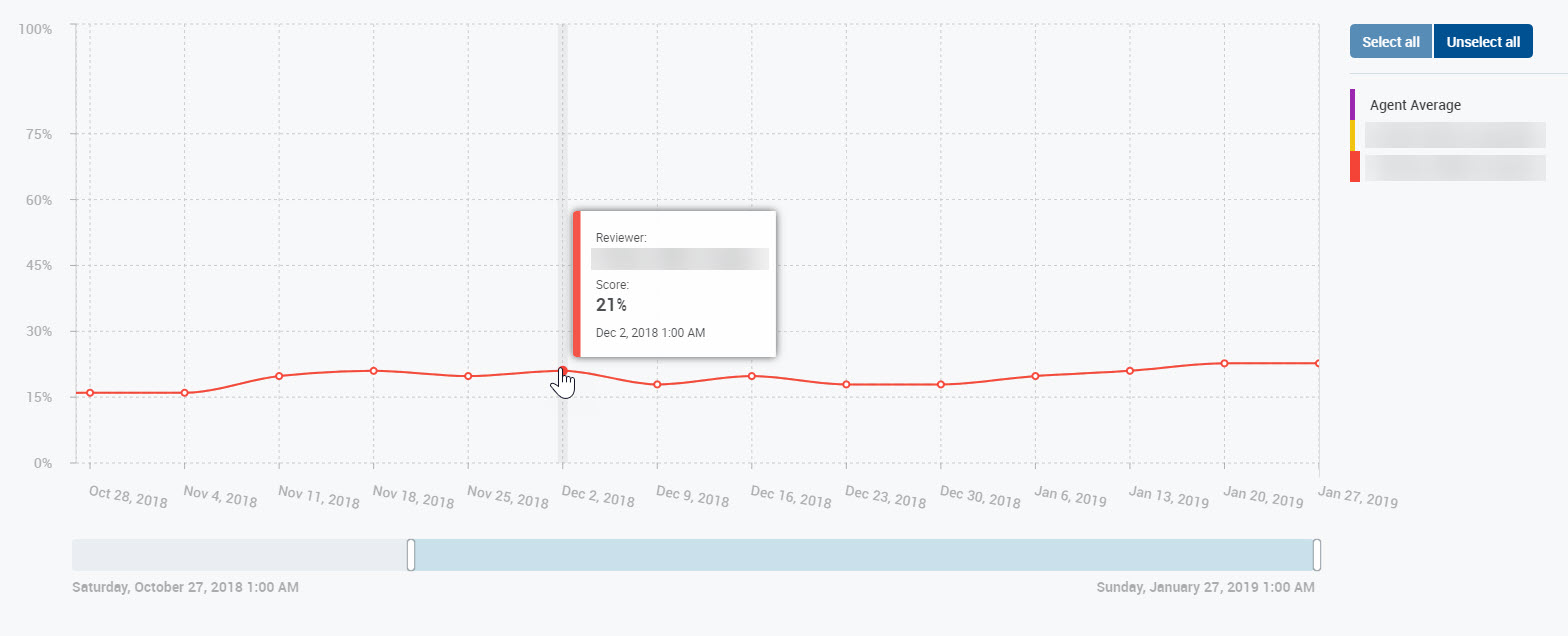
The tooltip contains the following information:
- Reviewer – name of the pointed reviewer
- Score – score for a selected questionnaire
- Date – selected point in time
Setting a Date Range
By default, the report displays the last three months. The date range displayed can be modified using the time period selector at the top of the report screen.

Click a different date range (one, six or twelve months) to view a shorter or longer time period. Select a shorter range if the reviews are close together in time or a longer range if the reviews are further apart in time. It is also possible to select All time to display all available data.
To define a custom date range, click the Custom date range button. A calendar will display. The currently selected date range is highlighted in blue.
Click on the calendar to select the first day of the custom date range. Then click on the calendar to select the last day. The selected date range will be highlighted in blue.
Use arrows at the top corners to go to the previous/next month.
Alternatively, change the date range using the date range scale bar at the bottom of the report screen. The date range scale bar displays all data available from when the questionnaire was first used. The default date range shows the last three months of data.
Click inside the highlighted area to drag and move the defined date range.

Drag the bar to extend or shrink the date range.

The time displayed corresponds to the timezone of the current user. Not necessarily the server timezone.
Period To as defined in the Review criteria is used as the decisive date when a Review score is shown in the report/chart.
Switching Between Views
To switch between the Chart and the Table views, click on the Chart (


The Table view contains data used to generate the chart. The same data is exported to Excel upon export.
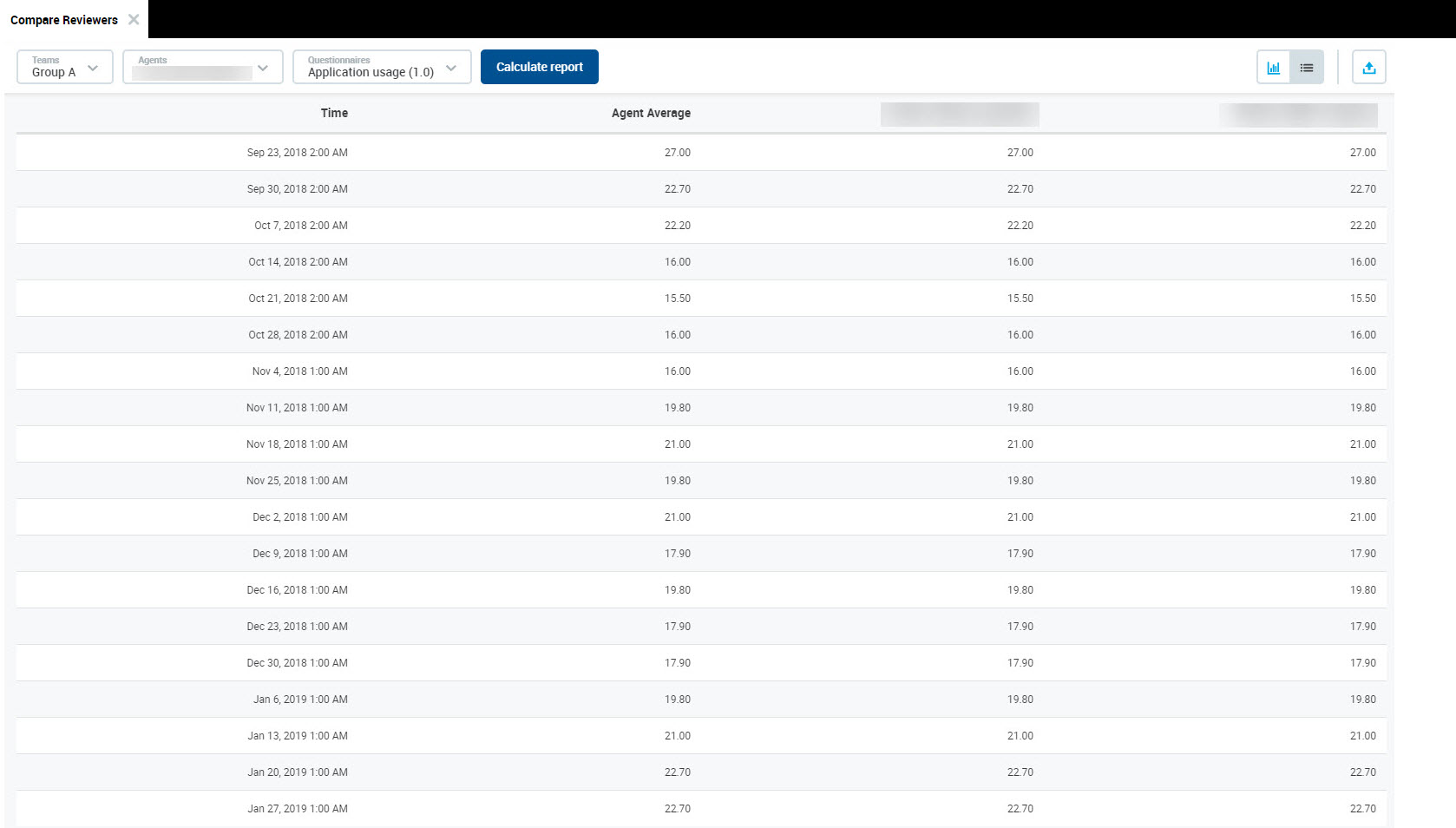
Hover the mouse cursor over the table to view details. A tooltip with details for the selected review results will appear.
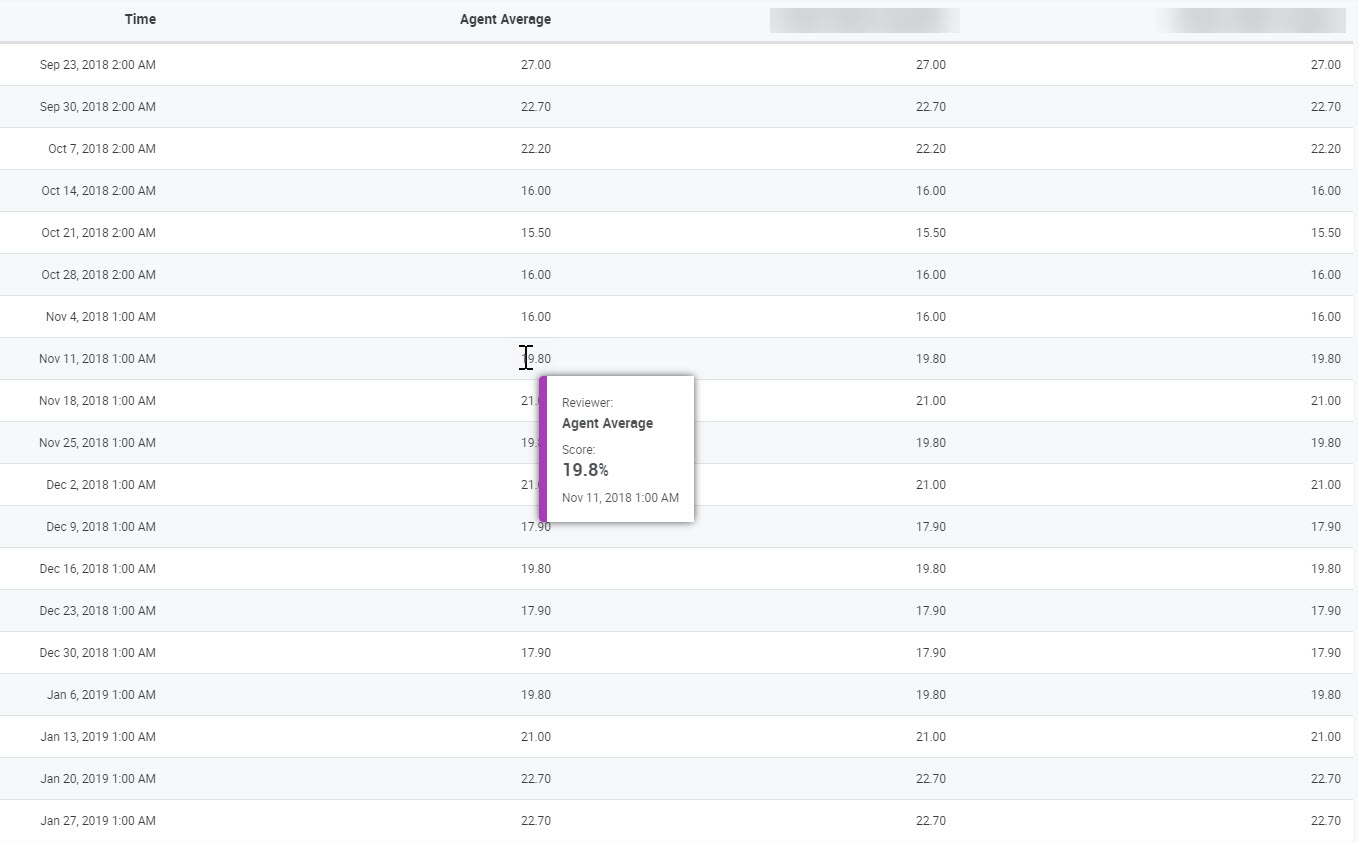
Drilling Down the Levels
Click on any point in time on the line to drill down.
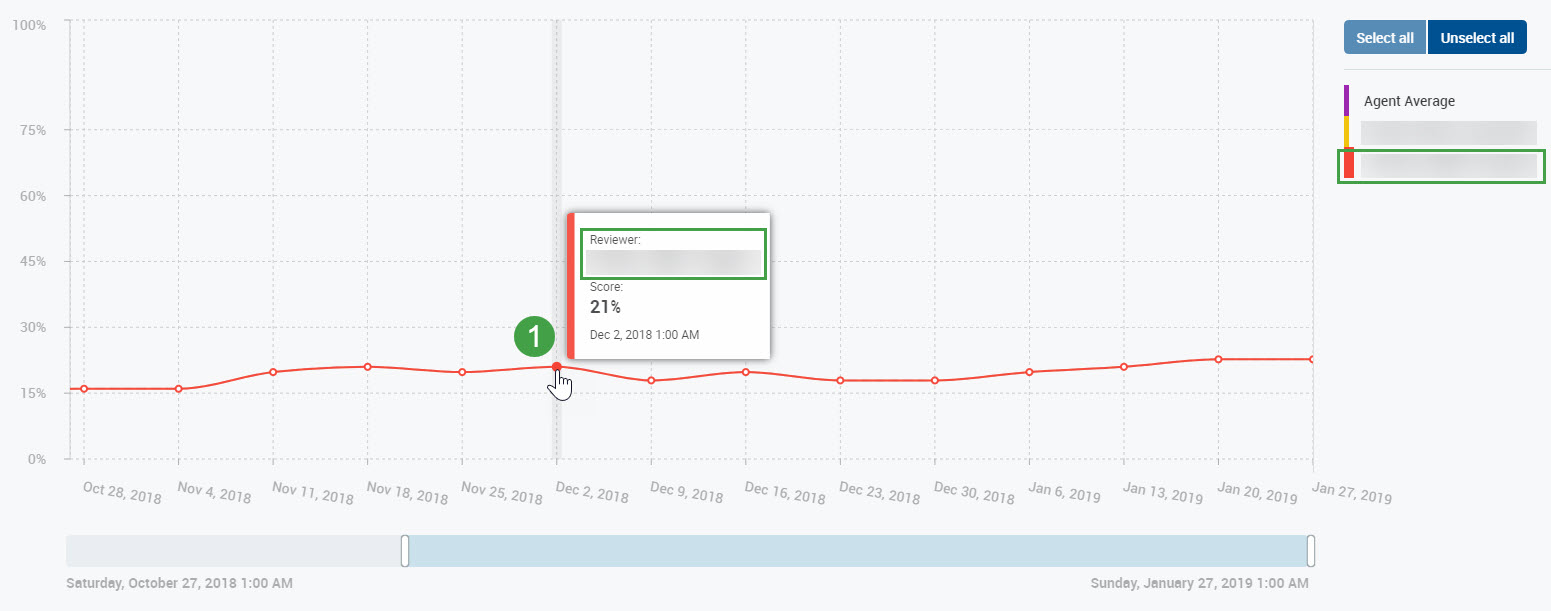
A new bar chart will appear. Bars on the chart will represent the scores received from particular reviewers for each questionnaire section. Additionally, the selected point in time will be displayed as a time range using Start date and End date fields at the top of the screen. Modify Start and/or End dates to display the average result for the selected time period.
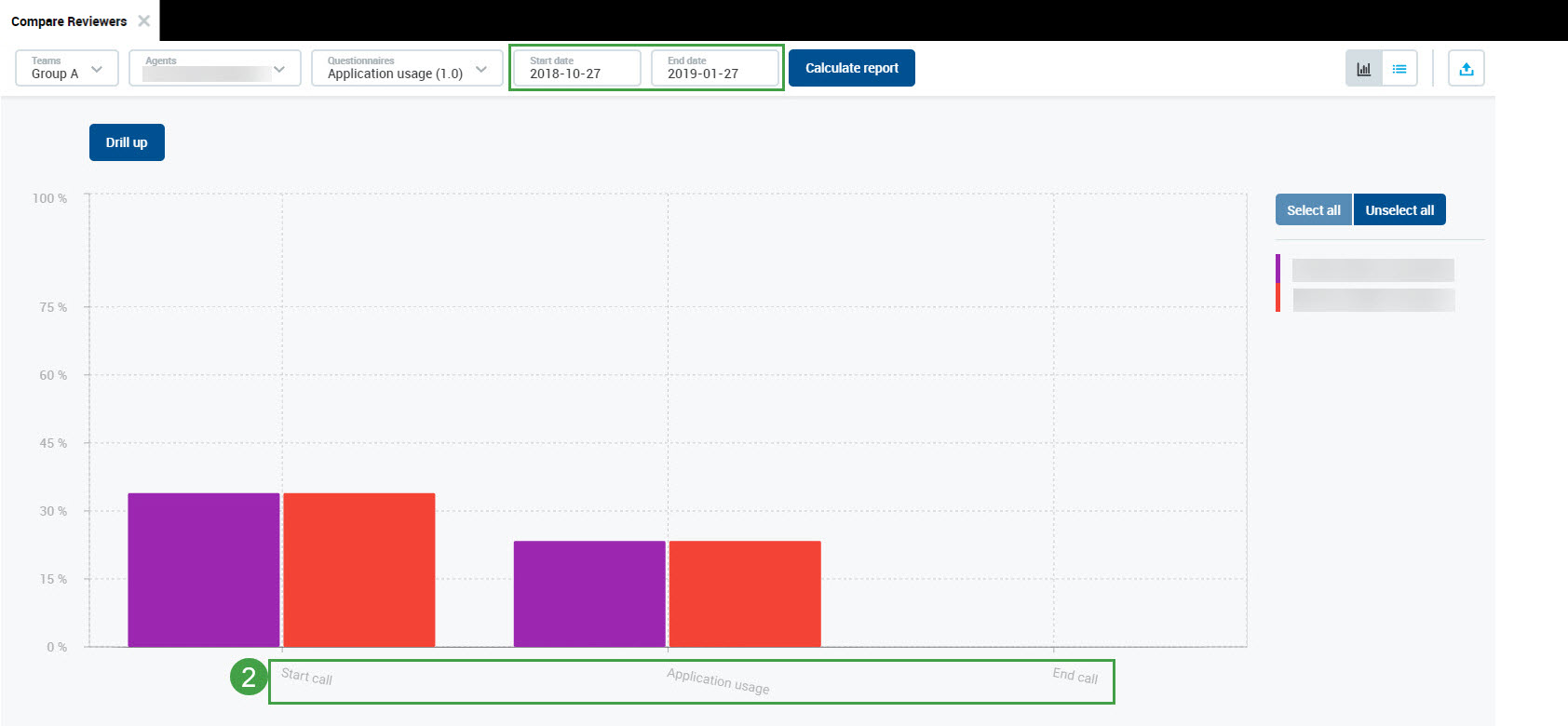
Click on one of the bars to drill down again.
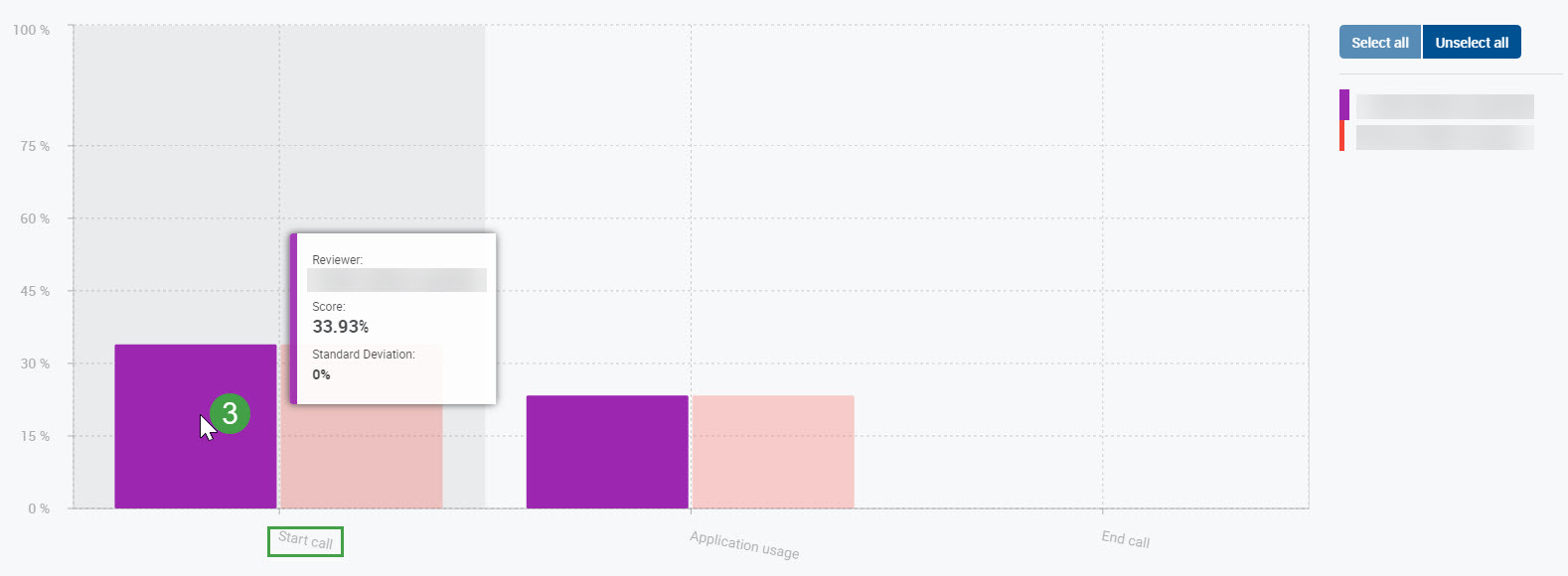
A new bar chart will appear. Bars on the chart will represent scores for each question belonging to the selected questionnaire section.
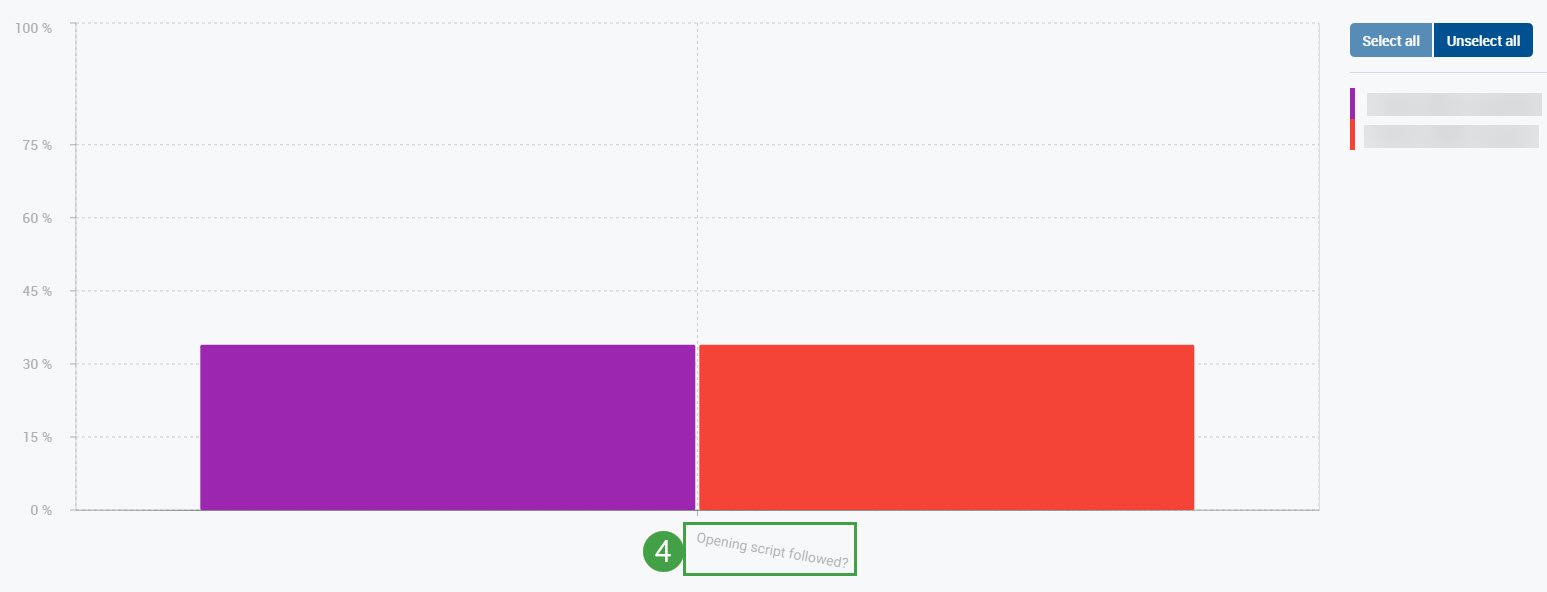
Hover the mouse cursor over the bar to view details. A tooltip with details for the selected question and the review results will appear.
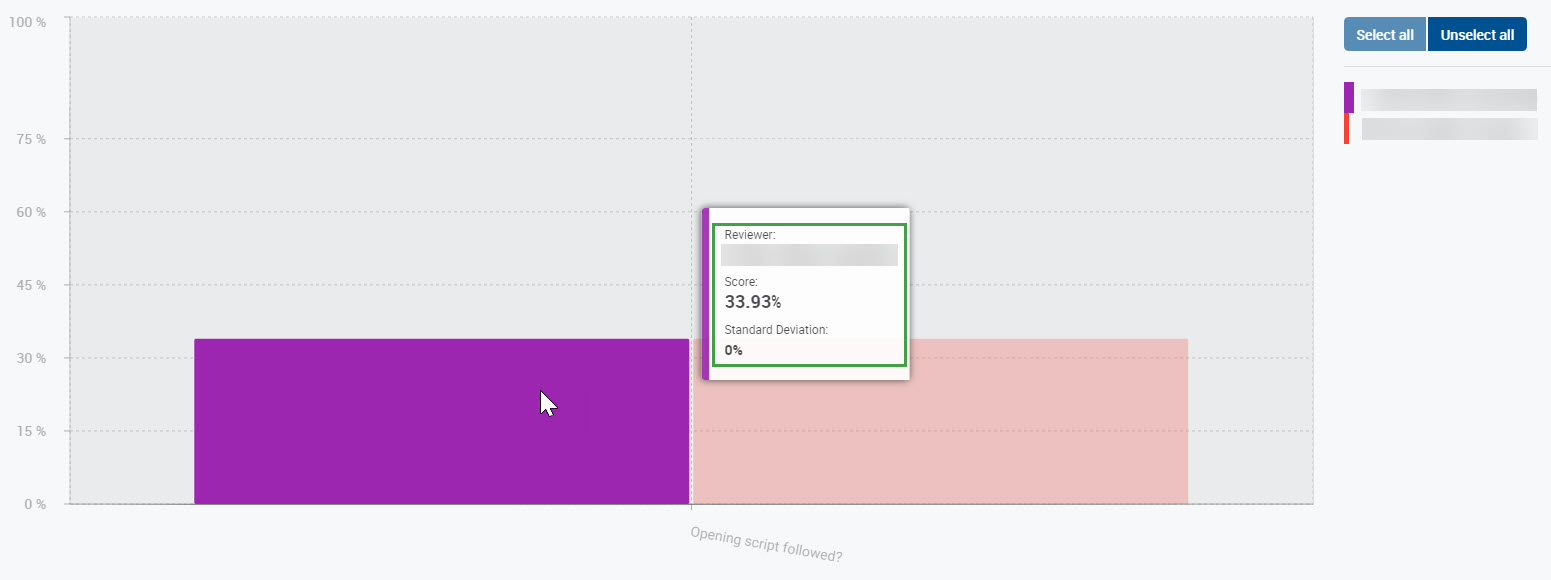
It is also possible to change the view after drilling down. The Table view contains data used to generate the chart. Hover the mouse cursor over the table to view details. A tooltip with details for the selected review results will appear.

If it is not possible to drill down again, a notification will appear at the bottom of the screen, indicating that this is the lowest level possible.
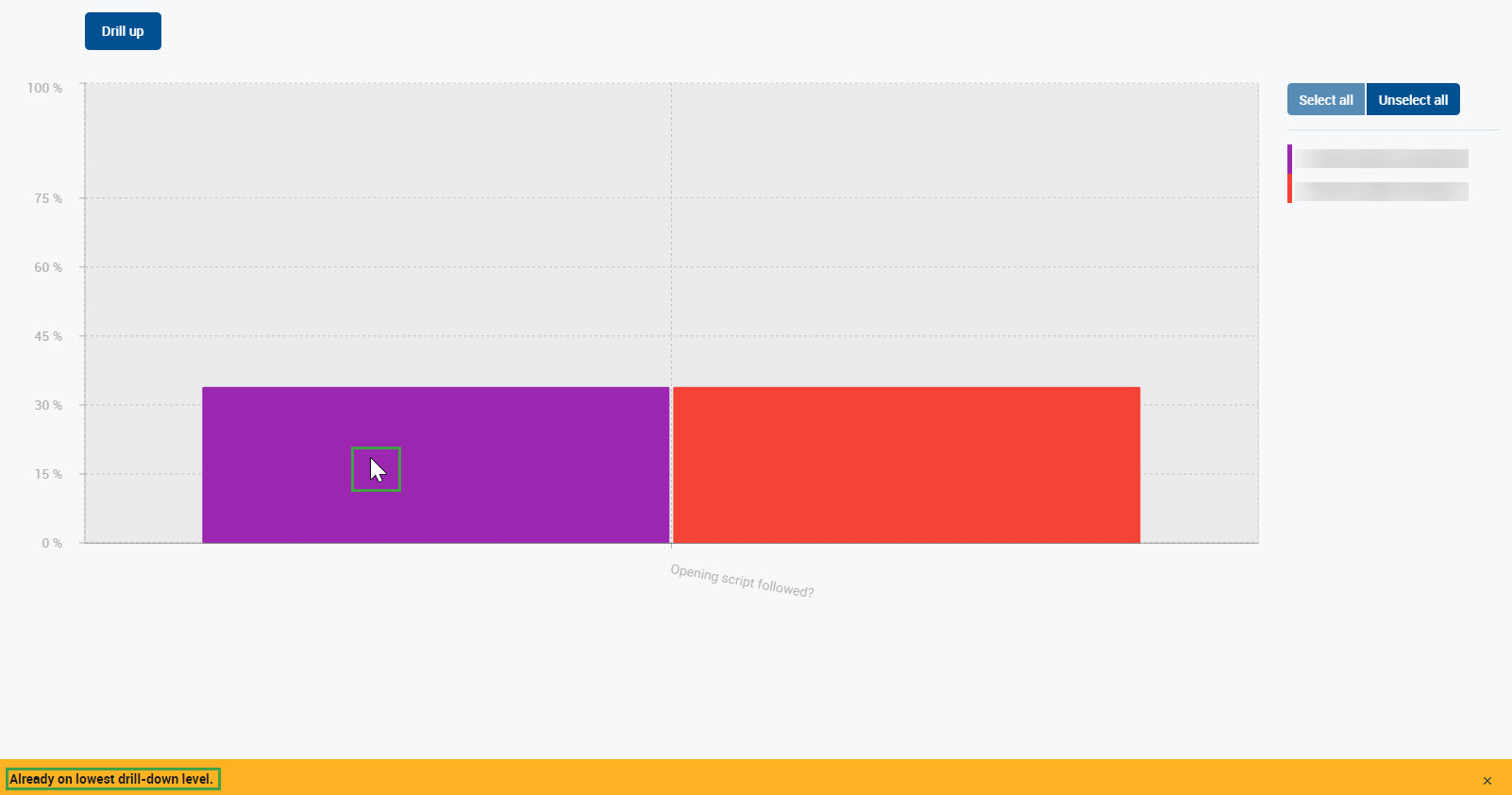
Click the Drill up button at the top of the report to go one level up.

Selecting Individual Results
The legend initially shows all reviewers for the selected agent and questionnaire. After drilling down, it shows all questionnaire sections or all questions from the selected section.
Click on a particular legend item to unselect it. The unselected items are grayed out and disappear from the chart. Click the grayed-out item to select it again.
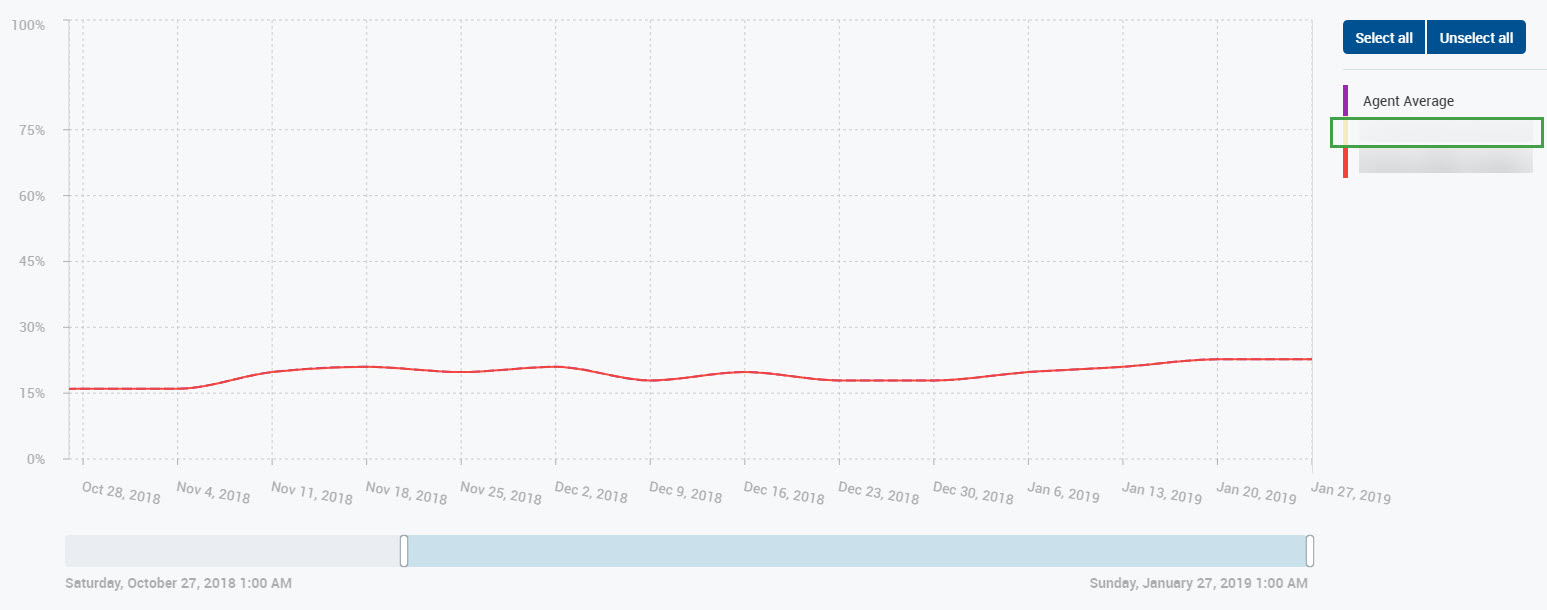
Click Unselect all to gray out all items. Then click on an individual item or items to display them on the chart. Click Select all to display all items again.

Another way to display individual results is by highlighting:
- Ensure that the Select all option is selected.
- Hover the mouse over the legend item that should be highlighted.
- The line representing the selected item will remain on the chart. The rest of the items will be grayed out.
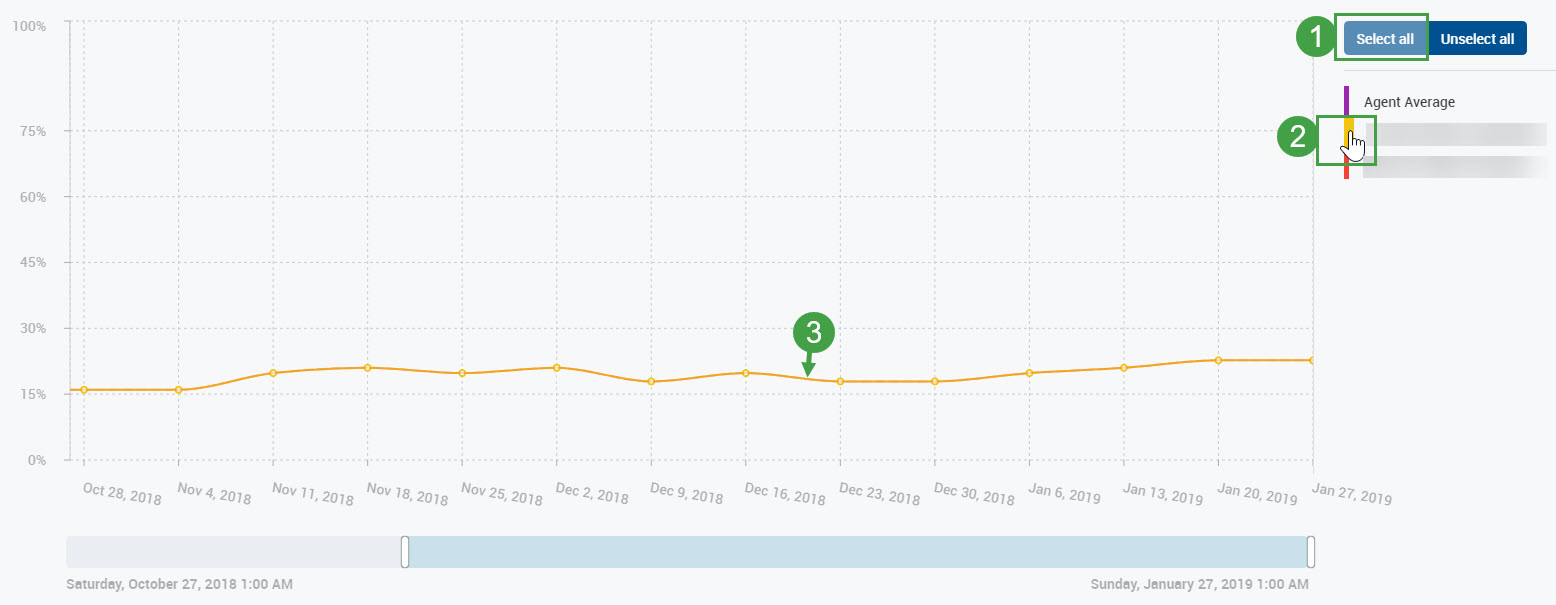
Exporting Data
To export the report as an Excel spreadsheet, click the Export button.

A notification about the planned download will display at the bottom.

The exported file contains all of the currently displayed data with date range filters applied.
If you use international characters in your reports these special letters/characters may not display properly in MS Excel. If letters or characters do not display as expected please switch encoding in Excel to UTF. To do this open a new excel file and go to Data → Import from text.
Open Microsoft Excel
- Go to the Data Tab
- Click on the From Text/CSV icon.
Navigate to the location of the file that you want to import and import it.
Select the file type that best describes your data from the File Origin dropdown menu - Select Unicode (UTF-8)
- Click Load
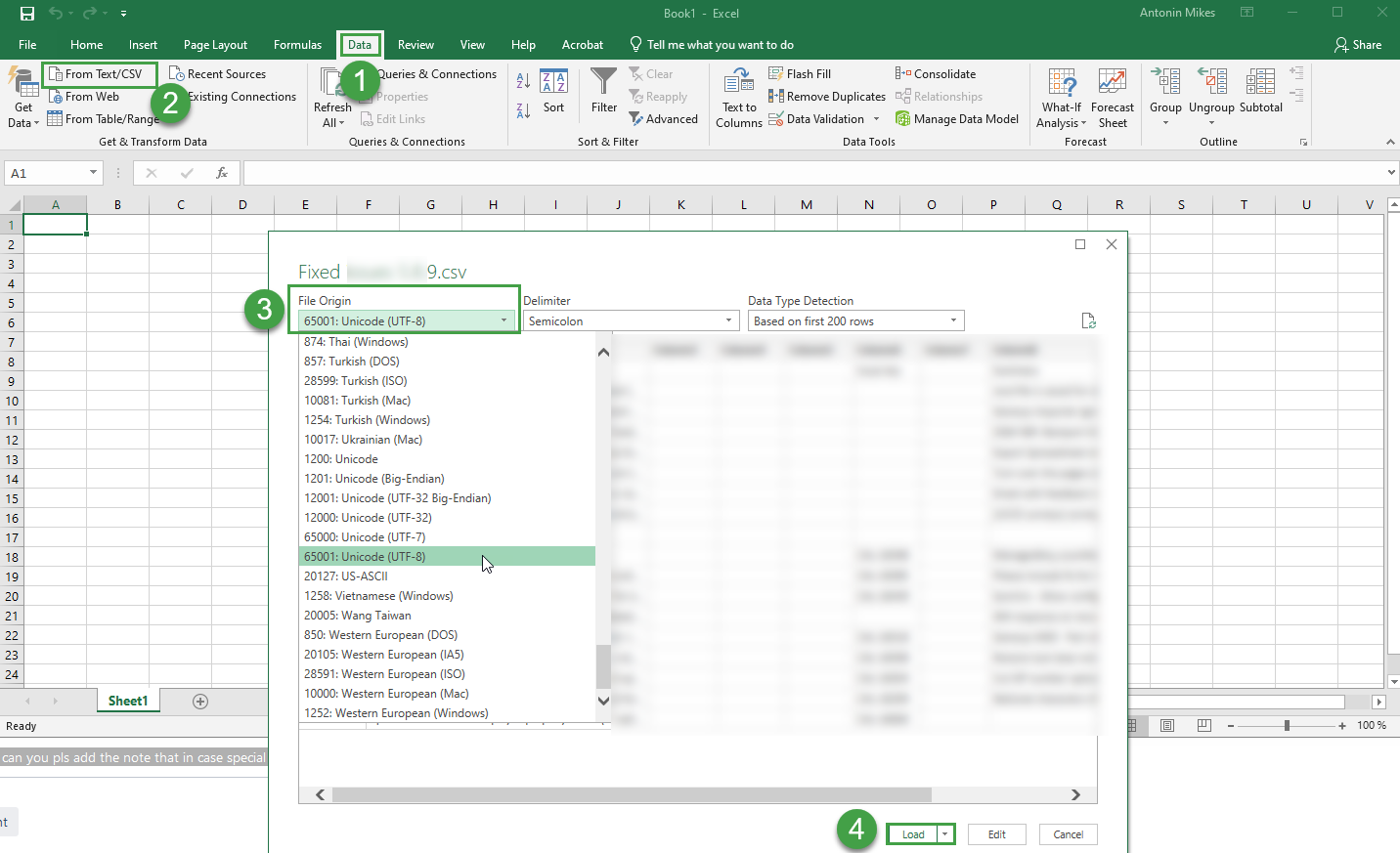
Changing Initial Drop-Down Values
It is possible to change initial drop-down values (for example select a different team, questionnaire, agents etc.) at any time. This change is indicated by a red exclamation mark on the Calculate report button.
Click the Calculate report button to recalculate the report again using new values. A new report will display.
Note that after changing initial drop-down values, but before clicking the Calculate report button to recalculate, it is not possible to export data, drill down or drill up the report and a warning message is displayed.
Click Calculate report to apply changes or reset changes to be able to export, drill down and drill up.


